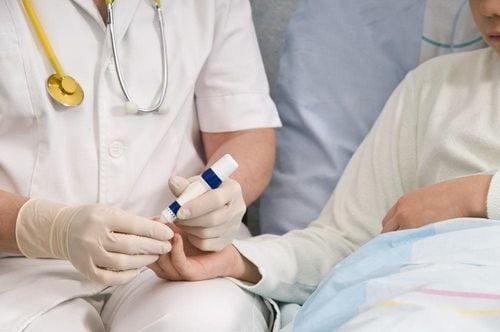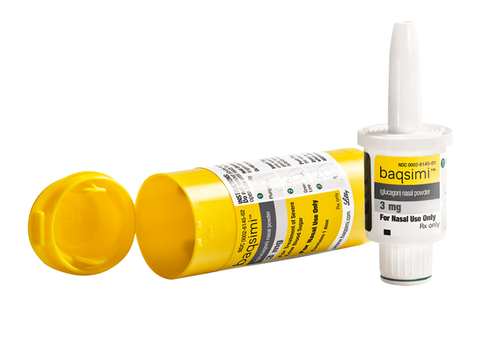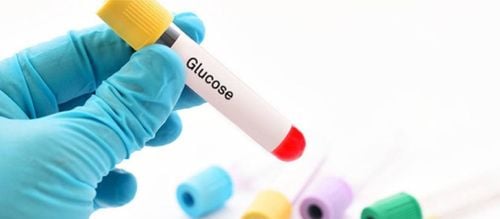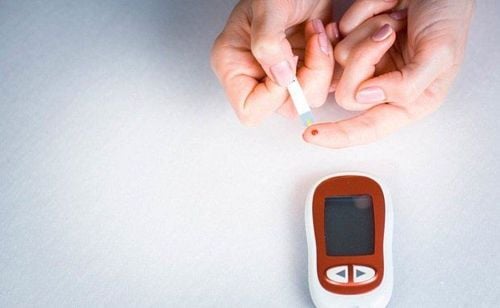This is an automatically translated article.
People with type 1 diabetes need lifelong insulin therapy. Most patients require two or more insulin injections per day, with doses adjusted based on blood glucose monitoring.1. Methods to cure type 1 diabetes
Combined approaches to the treatment of type 1 diabetes include:
Using insulin Carbohydrates, fats and proteins Regular monitoring of blood glucose levels Eat healthy foods Exercise regularly and maintain weight Reasonable The goal of treatment for type 1 diabetes is to keep blood sugar levels normal, delaying or preventing complications. Daytime before meals keep blood sugar (or glucose) between 80 and 130 mg/dL (4.44 to 7.2 mmol/L) and blood sugar 2 hours after eating no higher than 180 mg/dL (10 mmol/L).

Duy trì thể dục đều đặn sẽ giúp điều trị bệnh tiểu đường
2. How to maintain blood sugar of people with type 1 diabetes
2.1 Insulin and certain drugs
All people with type 1 diabetes need lifelong insulin treatment. With a variety of insulins such as:
Short-acting insulin such as Humulin R and Novolin R Rapid-acting insulin such as insulin glulisine (Apidra), insulin lispro (Humalog) and insulin aspart (Novolog) Intermediate-acting insulin such as NPH insulin ( Novolin N, Humulin N) Long-acting insulin such as insulin glargine (Lantus, Toujeo Solostar), insulin detemir (Levemir) and insulin degludec (Tresiba)
2.2 Managing insulin
For type 1 diabetes, patients cannot use oral insulin to lower blood sugar because stomach enzymes will break down insulin, preventing the drug from working. Therefore, the patient will need to inject or pump insulin automatically.
2.2.1 Injecting insulin
The patient can use a needle and syringe or insulin pen to inject insulin under the skin. Insulin pens look like ink pens and are available with either single-use or refillable insulin.
If you choose to inject, you may need to mix insulin for day and night use.
Instructions for using insulin pen for diabetes treatment
2.2.2 Automatic insulin pump
This device is about the size of a mobile phone, the patient will wear this device inside. A tube connecting the insulin supply (reservoir) to a catheter is placed under the skin of the patient's abdomen. This pump can be worn in a variety of ways, such as a belt, in a patient's pocket or with specially designed pump straps.
There is also an option of a cordless insulin pump. The patient wears a device that contains insulin and has a small catheter placed under the skin. The device can be worn on the abdomen, on the lower back, or on the legs or arms. The setting of the treatment amount is set on the wireless device connected to the insulin pump.
The pump is programmed to automatically inject rapid-acting insulin. Because it is injected with a steady dose of insulin, it can replace all long-acting insulins.
When eating, the patient will program the pump with the amount of carbohydrates being eaten and the current blood sugar level and then the machine will inject a rapid-acting insulin (bolus) before the meal based on the parameter entered by the patient.
Several studies have shown that in some people, insulin pumps are more effective at controlling blood sugar than injections. An insulin pump combined with a continuous glucose monitoring device can help control blood sugar more closely.
2.3 Artificial pancreas
The US Food and Drug Administration has agreed to perform the first artificial pancreas method for people with type 1 diabetes 14 years of age and older. The device is implanted and linked to a continuous glucose monitor that checks blood sugar every five minutes and automatically pumps insulin. The device automatically delivers the correct amount of insulin based on the monitor's readings.
2.4 Other drugs
Depending on the patient's condition, the doctor may prescribe other drugs for people with type 1 diabetes, such as:
High blood pressure drugs are recommended for people with diabetes who have high blood pressure 140/90 mmHg or more. Your doctor may give it to your baby or take regular daily aspirin to protect your heart. Cholesterol-lowering drugs.
2.5 Blood sugar monitoring
Depending on the type of insulin therapy you use, you may need to check and record your blood sugar at least four times a day.
The American Diabetes Association recommends that people check their blood levels before meals and snacks, at bedtime, before exercising or driving, and if they suspect they have low blood sugar. . Careful and detailed monitoring is the only way to ensure blood glucose levels remain within the treatment target range.
Continuous blood glucose monitoring is the newest method to monitor blood sugar levels and is especially useful for preventing hypoglycemia. This machine attaches to the body with a fine needle just under the skin and after a few minutes it will check the blood sugar level.
2.6 Eat healthy and track carbohydrate intake
Currently, there is no standard diet for people with diabetes. However, patients need to focus their diet on nutritious, low-fat, high-fiber foods such as:
Fruits Vegetables Grains Nutritionists recommend that patients eat less products animal products and refined carbohydrates, such as white bread and sweets.

Ăn nhiều rau xanh có lợi cho bệnh nhân tiểu đường
2.7 Physical activity
Everyone needs regular exercise and people with type 1 diabetes are no exception. First, patients should consult their doctor about which sports or exercises are suitable for their health situation. The patient can then choose favorite activities such as walking or swimming and make these exercises part of their daily routine. Aim for at least 150 minutes of exercise per week, no more than two days without exercise. The goal for kids is at least one hour of exercise per day.
However, patients should note that exercise will lower blood sugar. If you are just starting to exercise, check your blood sugar regularly. You may need to adjust your meal plan or insulin dosage as physical activity increases.
Any questions that need to be answered by a specialist doctor as well as customers wishing to be examined and treated at Vinmec International General Hospital, you can contact Vinmec Health System nationwide or register online HERE.
The article references the source: diabetes.org
MORE:
What is the blood glucose level for diabetes? The role of blood glucose measurement What is a normal person's blood sugar?













